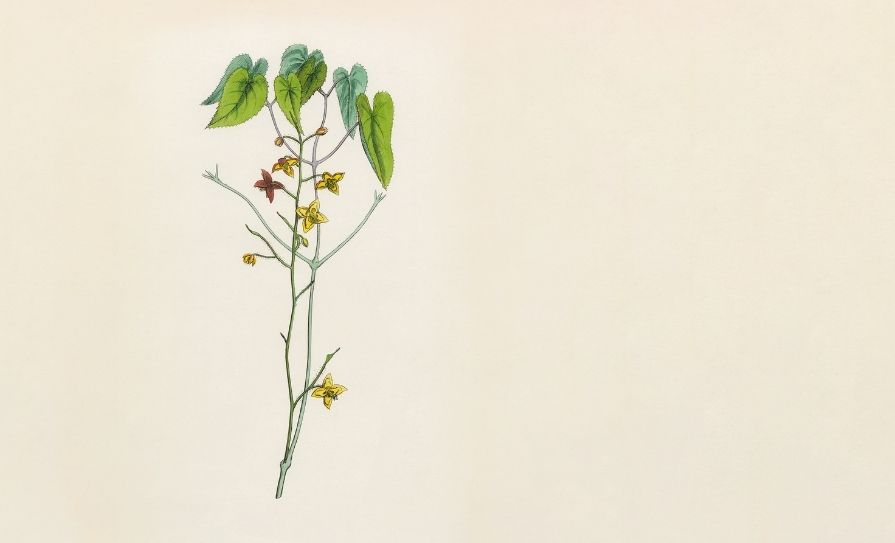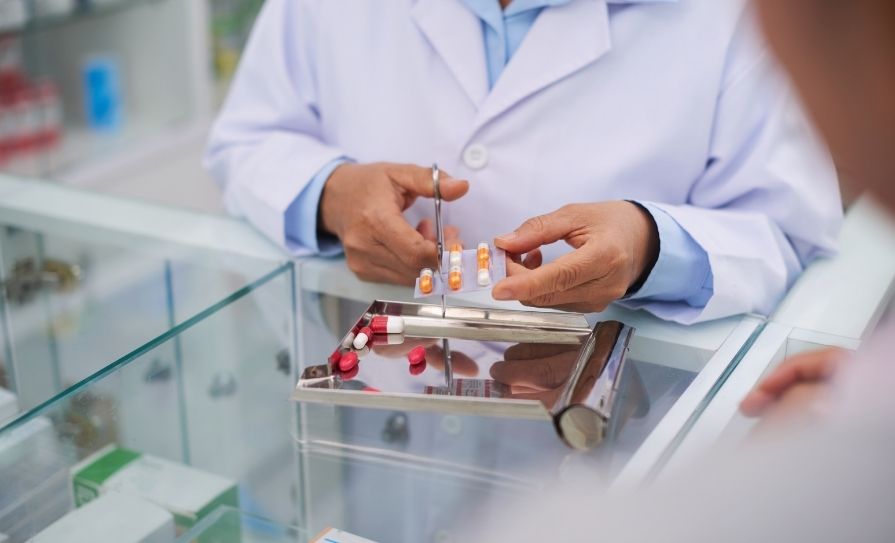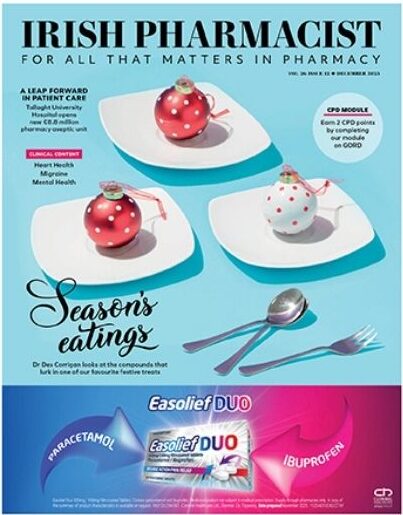Are herb extracts all they are cracked up to be, wonders Dr Des Corrigan
On a recent trip to see the Australian branch of the family, I went to buy some melatonin to help reduce our jet lag at a discount pharmacy chain outlet. While I was there, I could not help noticing the huge amount of shelf space given over to supplements of all sorts.
A wide range of the usual suspects – such as vitamins, minerals, omega- 3s, turmeric, echinacea, etc – were prominently displayed. Thanks to a recent article in Irish Pharmacist (May) on erectile dysfunction (ED), one product caught my eye as its labelling suggested it could boost sexual performance. I was intrigued to find out what was in it.
The major component in the six- herb extract mixture was a Chinese plant called Epimedium. According to a 2016 systematic review in the Journal of Dietary Supplements, this plant is known as yin yang huo in the Chinese Pharmacopoeia (official compendium of drugs).
The Chinese characters used in its name apparently translate literally as ‘obscene goat leaves of pulse plants’, which does not have a great marketing ring to it, so it is perhaps not surprising that Epimedium species are more widely promoted as ‘horny goat weed’ arising from its traditional use in Traditional Chinese Medicine (TCM) to tonify the kidneys and strengthen ‘yang’, thereby restoring erectile function.
According to a 2025 review of the pharmacology of bioactive compounds from Epimedium on the male reproductive system, published in the Asian Journal of Andrology, there are 80 species of Epimedium, of which E.Brevicornu or brevicornum and E.Sagittatum are most often used in commercial products targeted at those who wish to have a ‘natural’ alternative to sildenafil- type medicines such as Viagra.
The main active components are an unusual group of flavonoids described as being prenylated, the chief of which is called icariin.
The evidence reviewed by the authors suggests that icariin and its metabolites play a crucial role in male reproductive protection through effects on testosterone secretion, improving spermatogenesis, alleviating oxidative stress, and improving ED partly through inhibition of phosphodiesterase type 5 (PDE5) in the same way that sildenafil and other synthetics act on the corpus cavernosa.
Although the PDE5 inhibition is described as weak, both its ability and that of icariin to increase penile NO synthase, as reported in the journal Andrology in 2017, does provide pharmacological plausibility for the use of Epimedium extracts, standardised on their icariin content, to treat ED.
Sadly, there are no well-designed clinical trials to back up the quite extensive in vitro and in vivo evidence. That 2017 paper suggests combining icariin and sildenafil on the basis of studies in rats. Leaving aside the not inconsiderable matter of the lack of clinical data, such a combination appears to me to rather defeat the purpose of seeking a ‘natural’ alternative to sildenafil-type medicines. In addition to the horny goat weed, this sexual performance product is labelled as also containing ginkgo biloba — although it is difficult to see why a herb recognised by the European Medicines Agency (EMA) as supporting improvements in both age-associated cognitive impairment and quality of life in mild dementia is included in a product ostensibly for ED.
More of a case could be made for including Panax (Korean) ginseng in the six-herb extract mixture, as the EMA says it can be used as a traditional herbal medicinal product for symptoms of asthenia, such as fatigue and weakness, that might be relevant in ED.
Two other plant ingredients in this kitchen sink-type formulation, typical of so many herbal products
on the market, are more obvious choices, as both damiana and tribulus have long had reputations
as aphrodisiac herbs. Damiana – or Turnera diffusa, to give it its botanical name – has been the subject of several randomised controlled trials (RCTs) based on its reputation and on animal evidence described in a 2014 review in the Journal of Ethnopharmacology.
One such observational study was published in 2019 in BMC Women’s Health involving post-menopausal women given a commercial food supplement containing damiana, fenugreek, gingko, and tribulus in tablet form for two months. The Female Sexual Function Index increased in 86 per cent of the women,
An improvement in sexual desire was noted after eight weeks with no change in sex hormone level
while testosterone levels were increased in 52 per cent, alongside a significant decrease in sex hormone- binding globulin levels. Similar results were found in two RCTs from 2006 and 2011, but in all three cases it was pointed out that the multicomponent nature of the test products made
it impossible to determine the contribution (if any) of damiana to the observed effects.
In the case of tribulus, the EMA stated in May 2024 that its Herbal Medicinal Products Committee was unable to establish an EU herbal monograph for tribulus terrestris herb, as there was no published data on safety and efficacy to support a well-established use indication claim and that information on a traditional use in Europe was also insufficient.
A systematic review of nine clinical trials and one quasi-experimental study (lacking a control group) on the effects of tribulus supplementation on ED and testosterone levels, published earlier this year in the journal Nutrients, concluded that tribulus had a low level of evidence for improving erectile function and no robust evidence of an effect on testosterone levels.
A 2016 overview of botanicals in women’s health in Pharmacological Reviews drew attention to a root vegetable from Peru called Maca, used for centuries for infertility.
A member of the cabbage family growing at high altitudes in the Andes, it has the botanical name Lepidium meyenii and, like other members of that family, it contains sulphur-based glucosinolates, although thankfully it has an aroma that resembles caramel. A 2024 review in Nutrients refers to it as ‘Peruvian Viagra’, so inevitably there is a plethora of supplements on the market containing it or extracts rich in alkaloids called macamides. A 2020 review in a Royal Society of Chemistry journal Food & Function included an RCT in which men were given up to 3g of Maca or a placebo daily for 12 weeks. An improvement in sexual desire was noted after eight weeks with no change in sex hormone level. A 2016 systematic review in Maturitas recorded favourable effects on sperm motility and semen quality in both infertile and healthy men.
The extent of interest in this area is borne out by a systematic review, this time of pre-clinical studies on the effects of dietary polyphenols such as catechins (from green tea) and my old friends, resveratrol and curcumin, on vasculogenic ED that appeared in Phytotherapy Research earlier this year. The polyphenols consistently demonstrated improvements in erectile function but the authors noted that the animal models and in vitro tests “may not precisely reflect human physiological responses” and reached the blindingly obvious conclusion that clinical investigations are needed – a conclusion that must also be applied to all of the aforementioned plants.
Dr Des Corrigan, Best Contribution in Pharmacy Award (winner), GSK Medical Media Awards 2014, is an Adjunct Associate Professor at the School of Pharmacy and Pharmaceutical Sciences at TCD where he was previously Director and won the Lifetime Achievement Award at the 2009 Pharmacist Awards.
He was chair of the Government’s National Advisory Committee on Drugs from 2000
to 2011, having previously chaired the Scientific and Risk Assessment Committees at the EU’s Drugs Agency in Lisbon. He chaired the Advisory Subcommittee on Herbal Medicines and was a member of the Advisory Committee on Human Medicines at the HPRA from 2007 to 2024. He has been a National Expert on Committee 13B (Phytochemistry) at the European Pharmacopoeia in Strasbourg and served on the editorial boards of a number of scientific journals on herbal medicine.







